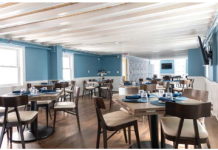By American Heart Association/American Stroke Association
ROBBINSVILLE – As the mercury soars and cool water and shade becomes more precious, the American Heart Association/American Stroke Association asks consumers to learn the signs of heatstroke, which differ from the signs of stroke.
“Although both medical emergencies, it’s important to understand the differences between heatstroke and stroke,” said Mirian Medina, RN, stroke coordinator at Raritan Bay Medical Center in Perth Amboy who is an American Stroke Association spokesperson.
Heatstroke, sometimes called sunstroke, occurs when core body temperature rises to more than 104 degrees Fahrenheit and organs can’t function properly.
A stroke, however, occurs when a blood vessel to the brain is either blocked by a clot or bursts. The disruption of blood and oxygen to the brain causes brain cells to die.
“Extreme heat or exercising outside when it’s hot out, can lead to a drastic rise in body temperature which can cause heatstroke” Medina said. “Some people are more likely to suffer heatstroke due to age, weight, medical history or medications they are taking. It’s important to know your personal risk for heatstroke and take actions to reduce them.”
Certain heart medications, like beta blockers, ace receptor blockers, ace inhibitors, calcium channel blockers and diuretics which deplete the body of sodium, can exaggerate the body’s response to heat.
“Heatstroke can be life-threatening and you should call 9-1-1 immediately if you suspect someone is suffering from heatstroke,” Medina said. “Try immediately to cool them down by taking them out of the heat, offering them water and fanning them with cool air.”
If someone is exhibiting stroke-warning signs, bystanders should also call 9-1-1 immediately and let the operator know it may be a stroke.
“In both a heatstroke and stroke situation, time is of the essence,” Medina stressed. “The most important thing is to call 9-1-1 immediately in order to get proper medical attention.”
The symptoms of stroke are:
- Facial Drooping
- Arm Weakness
- Speech difficulty
- Additional signs of stroke include sudden trouble seeing, dizziness, confusion, severe headache, or weakness on one side of the body.
If any of these signs are present, call should be made to 9-1-1 immediately. The American Stroke Association teaches the acronym F.A.S.T. for stroke: Face drooping, Arm weakness, Speech difficulty, Time to call 9-1-1.
The symptoms of heatstroke are:
- Body temperature of 104 F or greater
- Lack of sweating. Skin will feel hot and dry, unless heatstroke is cause by exercise.
- Nausea, vomiting or both
- Flushed/red skin
- Rapid, shallow breathing
- Headache
- Confusion and/or unconsciousness
- Muscle cramps or weakness
- Strong and rapid pulse
Take steps to cool down and get medical attention immediately if someone is experiencing any signs of heatstroke.














